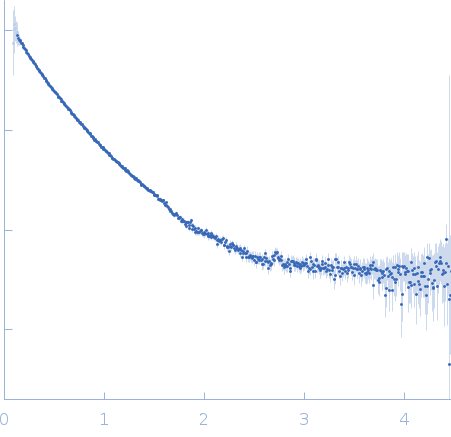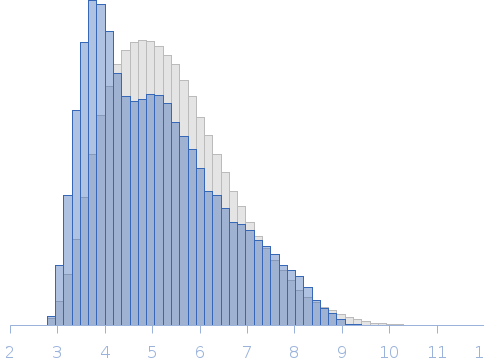|
Synchrotron SAXS
data from solutions of
RORg2 bound to a Classic-RORgamma Response Element
in
25 mM HEPES, 150 mM TCEP, 2% Glycerol, 5 mM DTT, pH 7.5
were collected
on the
12.3.1 (SIBYLS) beam line
at the Advanced Light Source (ALS) storage ring
(Berkeley, CA, USA)
using a Pilatus3 X 2M detector
at a sample-detector distance of 2 m and
at a wavelength of λ = 0.127 nm
(I(s) vs s, where s = 4πsinθ/λ, and 2θ is the scattering angle).
One solute concentration of 2.14 mg/ml was measured
at 10°C.
33 successive
0.300 second frames were collected.
The data were normalized to the intensity of the transmitted beam and radially averaged; the scattering of the solvent-blank was subtracted.
|
|
 s, nm-1
s, nm-1
 Rg, nm
Rg, nm